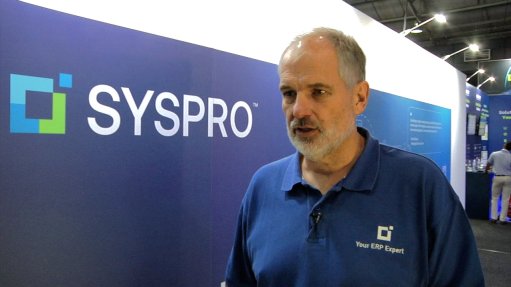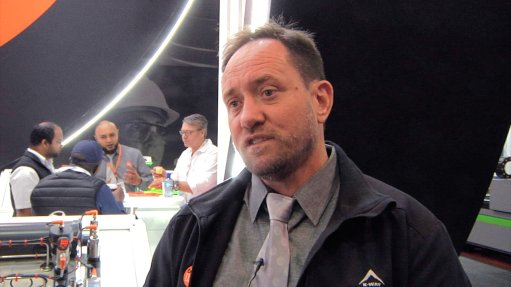Leveraging strategic foresight to strengthen African mining sector




NJERI MWAGIRU AMDC statutes are essential for creating unified mining policies that align with the AMV
LETITIA JENTEL Although global demand for critical minerals has intensified, policy misalignment and weak coordination among AU States have stalled progress on key associated AMV goals
DEON CLOETE Foresight enables policymakers to prepare for and respond to complex challenges while aligning the mining sector with national and AMV objectives
The African Minerals Development Centre (AMDC) has recognised the value of a strategic foresight framework and anticipatory governance plan to improve the management of Africa’s mineral resources.
Africa’s vast mineral wealth holds significant potential for its economic and geopolitical futures, but the continent faces considerable challenges in harnessing these resources for sustainable and inclusive long-term development.
Although the AMDC is central to aligning mining practices with the African Mining Vision (AMV), fostering a transition to sustainable resource management, complex challenges currently obstruct the AMDC’s efforts to implement the AMV effectively.
The policy insight report, ‘AMDC Shifting Ground: A Strategic Foresight Framework to Transform African Mining’, launched on 19 November 2024, notes that AMDC efforts are challenged by the diverse interests of African Union (AU) member States.
According to the report, the AMDC’s mandate is complicated by competing national priorities, limited resources and geopolitical factors, which slow down the ratification of crucial statutes.
AMDC statutes are essential for creating unified mining policies that align with the AMV. Research institute South African Institute of International Affairs (SAIIA) experts Dr Deon Cloete, Dr Njeri Mwagiru and Letitia Jentel warn that the lack of political commitment from some governments threatens the sector’s transformative shift towards sustainable development.
More rapid ratification of these statutes would improve governance structures and, consequently, support the AMDC’s goal of harmonising mining regulations across the continent and reducing reliance on extractive practices that have limited development.
Although global demand for critical minerals has intensified, policy misalignment and weak coordination among AU States have stalled progress on key associated AMV goals.
In this regard, the need for collaboration and anticipatory governance competencies in advancing Africa’s mining sector is emphasised by Cloete, Mwagiru and Jentel.
The report underscores the need for enhanced dialogue and streamlined frameworks to address roadblocks. Further, by integrating anticipatory governance, the AMDC can equip the African mining sector to respond to rapid economic, environmental and social shifts.
The research into co-creating a strategic foresight framework to transform African mining focuses on enhancing the AMDC’s four key pillars: AMV implementation, leveraging geological information systems, strengthening value chains, and supporting artisanal and small-scale mining.
The report notes strategic foresight can pave the way for more unified, resilient, long-term sustainability across the continent. This approach is described as essential to early detection of risks, identifying opportunities and adapting to long-term changes, thereby supporting sustainability goals.
Foresight enables policymakers to prepare for and respond to complex challenges while aligning the mining sector with national and AMV objectives.
A critical tool in this strategy is the African Green Minerals Observatory, which the report says will help centralise and standardise geological data to improve decision-making at national and regional levels.
“By providing access to reliable mineral data, the observatory enables AU member States to make informed choices aligned with the AMV,” Cloete, Mwagiru and Jentel tell Mining Weekly.
They note that this platform is designed to foster data-sharing, enhance policy alignment and support better resource management across African mining operations.
The AMDC also promotes local-content development, urging members to invest in infrastructure, skills and policies that encourage domestic processing and manufacturing, add Cloete, Mwagiru and Jentel.
“Encouraging value addition domestically allows for a greater share of economic benefits to remain in African economies,” they say, pointing out that the centre advocates for the refining and processing of minerals on the continent to retain value and support long-term economic growth.
Evolving Landscape
However, as the mining landscape evolves, so do the risks posed for example by synthetic mineral replacements and deep-sea mining. Synthetic materials and new technology, the authors point out, could disrupt traditional mining, potentially rendering certain resources obsolete. Deep-sea mining, meanwhile, while offering new resource opportunities, presents significant environmental risks.
In response, the AMDC is collaborating with various stakeholders to establish guidelines for responsible mining, focusing on long-term sustainability and anticipating future regulatory changes.
To address shared transnational risks in mining, such as environmental damage and economic instability, the centre has prioritised regional collaboration.
The SAIIA report emphasises that coordinated policies are required to address cross-border issues, and pool resources and knowledge.
By aligning policies and resources, the AMDC enables AU member States to collectively respond to shared challenges and work towards resilient development.
The centre is also pursuing partnerships to enhance governance and establish frameworks that support sustainable practices across Africa.
Drawing inspiration from successful initiatives, such as the Africa Centres for Disease Control and Prevention, the AMDC envisions an institution for mining governance that centralises expertise and resources, say Cloete, Mwagiru and Jentel.
The centre is also working with organisations, such as the African Union Development Agency – New Partnership for Africa's Development, or AUDA-NEPAD, to integrate sustainable practices across African mining sectors.
Comments
Press Office
Announcements
What's On
Subscribe to improve your user experience...
Option 1 (equivalent of R125 a month):
Receive a weekly copy of Creamer Media's Engineering News & Mining Weekly magazine
(print copy for those in South Africa and e-magazine for those outside of South Africa)
Receive daily email newsletters
Access to full search results
Access archive of magazine back copies
Access to Projects in Progress
Access to ONE Research Report of your choice in PDF format
Option 2 (equivalent of R375 a month):
All benefits from Option 1
PLUS
Access to Creamer Media's Research Channel Africa for ALL Research Reports, in PDF format, on various industrial and mining sectors
including Electricity; Water; Energy Transition; Hydrogen; Roads, Rail and Ports; Coal; Gold; Platinum; Battery Metals; etc.
Already a subscriber?
Forgotten your password?
Receive weekly copy of Creamer Media's Engineering News & Mining Weekly magazine (print copy for those in South Africa and e-magazine for those outside of South Africa)
➕
Recieve daily email newsletters
➕
Access to full search results
➕
Access archive of magazine back copies
➕
Access to Projects in Progress
➕
Access to ONE Research Report of your choice in PDF format
RESEARCH CHANNEL AFRICA
R4500 (equivalent of R375 a month)
SUBSCRIBEAll benefits from Option 1
➕
Access to Creamer Media's Research Channel Africa for ALL Research Reports on various industrial and mining sectors, in PDF format, including on:
Electricity
➕
Water
➕
Energy Transition
➕
Hydrogen
➕
Roads, Rail and Ports
➕
Coal
➕
Gold
➕
Platinum
➕
Battery Metals
➕
etc.
Receive all benefits from Option 1 or Option 2 delivered to numerous people at your company
➕
Multiple User names and Passwords for simultaneous log-ins
➕
Intranet integration access to all in your organisation





















